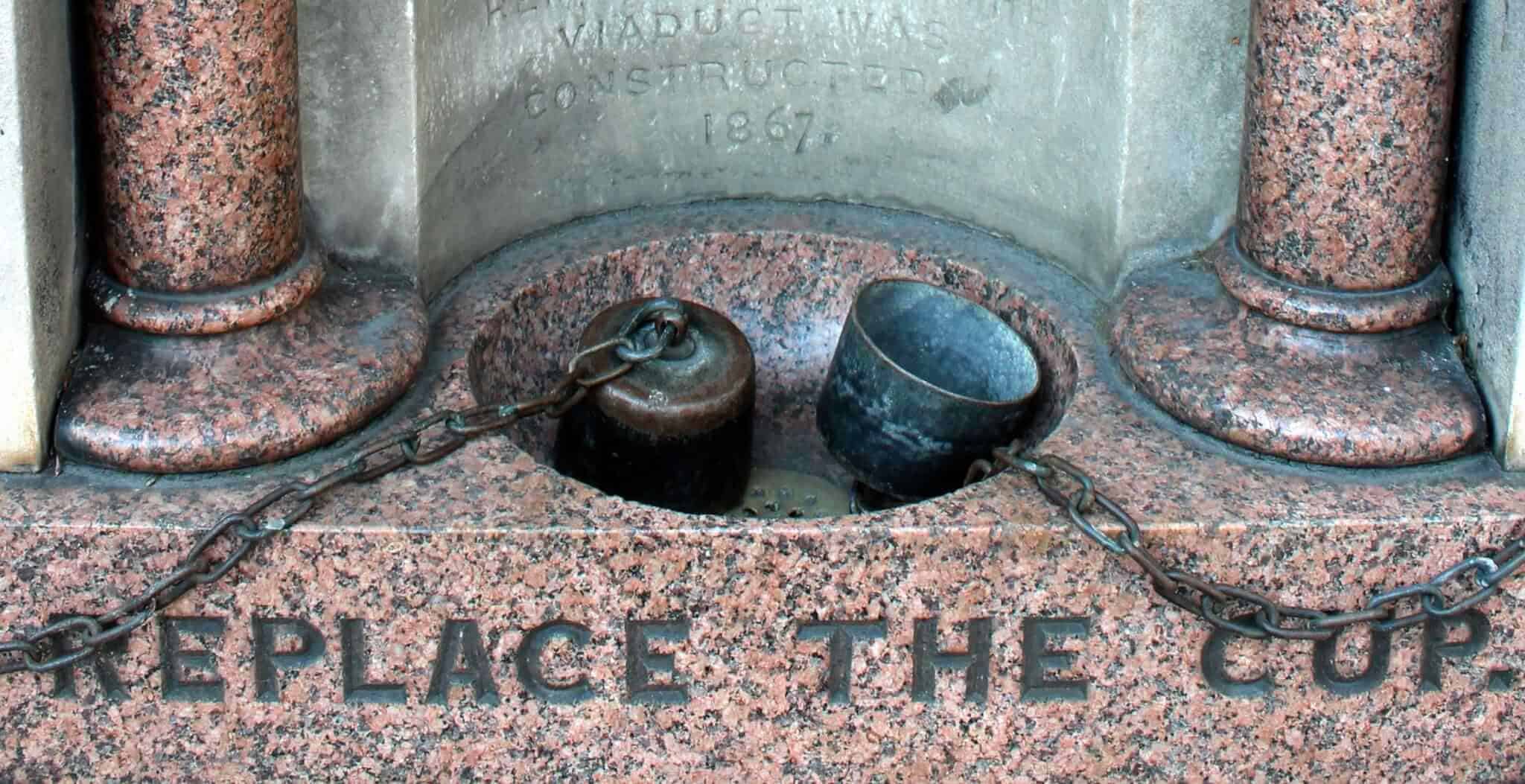Standing rather incongruously at the very eastern end of Holborn Viaduct, dug into the railings of St Sepulchre-without-Newgate church, is London’s first ever drinking fountain.
Built by the wonderfully named Metropolitan Drinking Fountain and Cattle Trough Association in 1859, the history of this little drinking fountain illustrates how dirty and diseased the water supply once was in London. In fact, by the mid-19th century the water was so polluted that beer was being used as a safer alternative!

The reason for the dirty water was a combination of rapid population growth in the 18th and 19th century, along with under regulated water supply companies. This culminated in a series of cholera outbreaks during the early 19th century, with the Metropolis Water Act being brought in during 1852 in an attempt to improve the dismal water quality in London. In its own words, it made a “provision for securing the supply to London of pure and wholesome water”. This radical piece of legislation made it illegal for water supply companies to obtain domestic water supply from the tidal Thames, notably because this was where the sewage companies often disposed of their untreated waste! Other solutions were to make water filtration compulsory, as well as building a new network of sewers to reduce the need for dumping raw waste into the River Thames.
 It was around this time that the Metropolitan Drinking Fountain and Cattle Trough Association was formed. Its two founding members, Samuel Gurney MP and Edward Wakefield, were both keen philanthropists and started the society in 1859. It was to be, in their own words, “The only agency for providing free supplies of water for man and beast in the streets of London”.
It was around this time that the Metropolitan Drinking Fountain and Cattle Trough Association was formed. Its two founding members, Samuel Gurney MP and Edward Wakefield, were both keen philanthropists and started the society in 1859. It was to be, in their own words, “The only agency for providing free supplies of water for man and beast in the streets of London”.
The first fountain was built in 1859 to great fanfare, and at its peak was being used by around 7000 people a day. In fact, the only interruption to the fountain’s service during its 150 year history was during the construction of the Holborn Viaduct during which time it was temporarily relocated.
Due to the immense popularity of the fountain, the society built an additional 85 water fountains over the next 6 years. A great deal of these fountains can still be found to this day, including the cattle troughs that were constructed in collaboration with the RSPCA. These were especially important around the live cattle market of Smithfield, where horses, dogs and cattle had often been brought from the surrounding counties. These water troughs became so important that their locations began to be built into maps, and the Victorians often referred to them as filling stations.
The society still exists today, albeit under the less grandiose name of the Drinking Fountain Association. It is still involved in building new drinking fountains, as well as restoring and maintaining the existing infrastructure.





